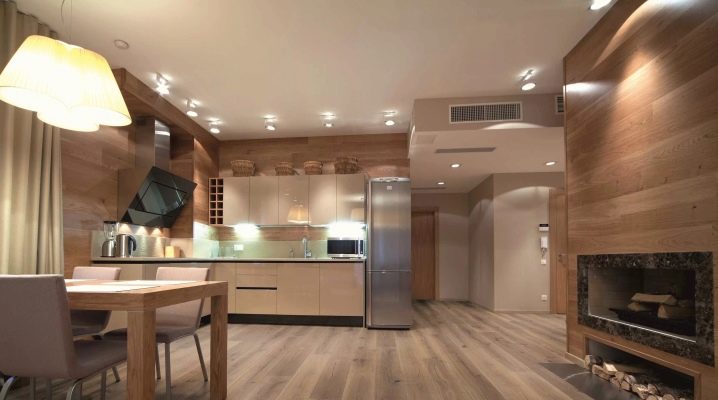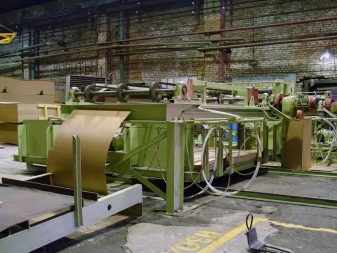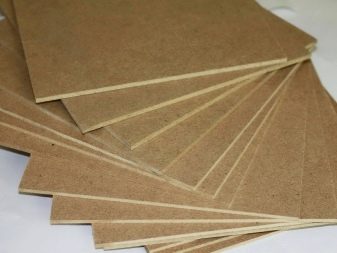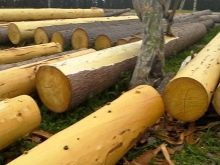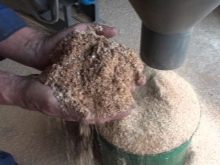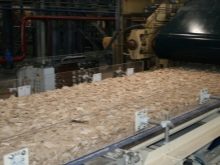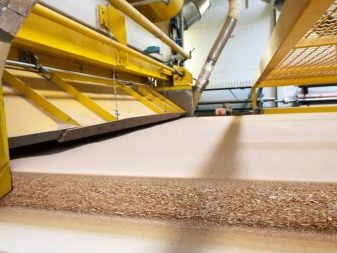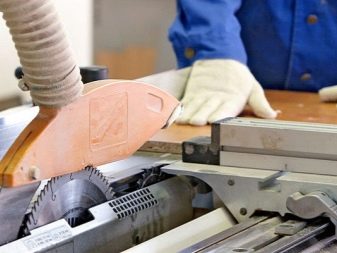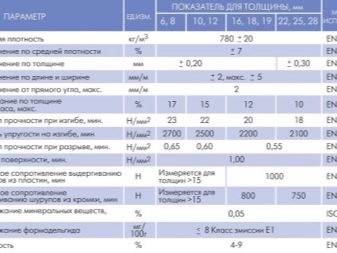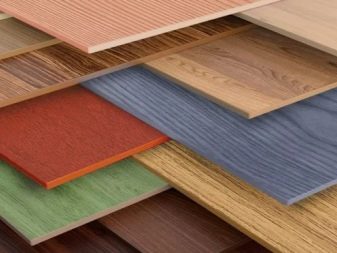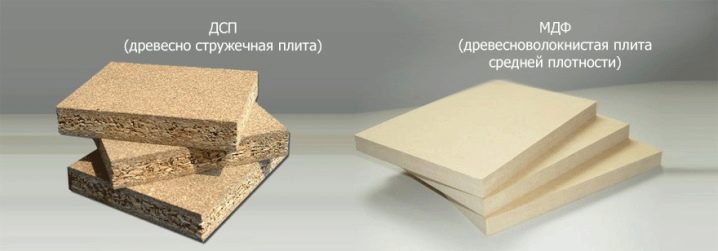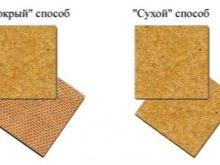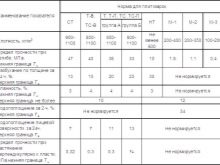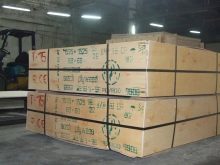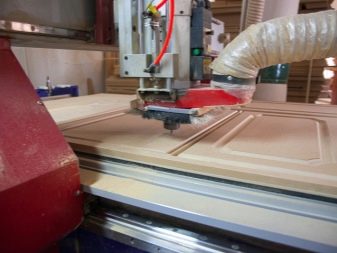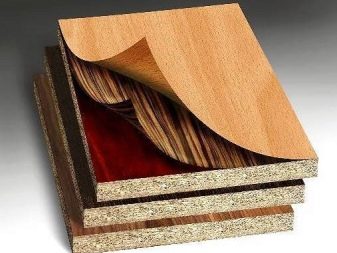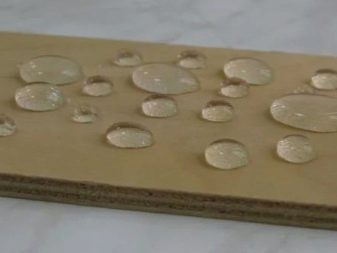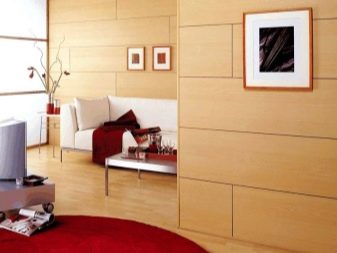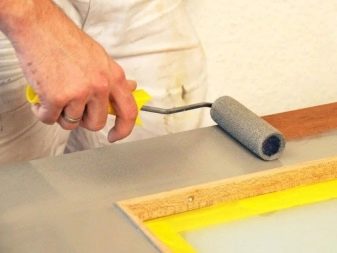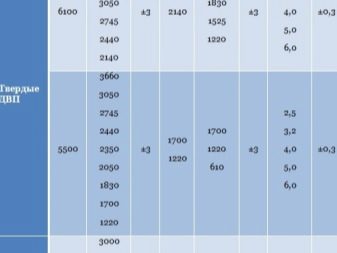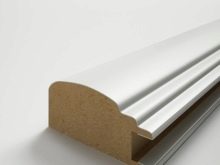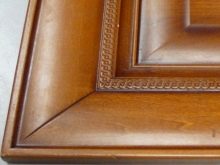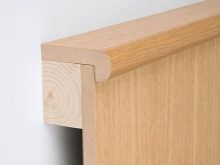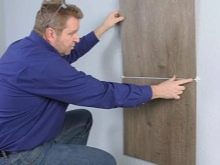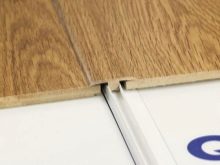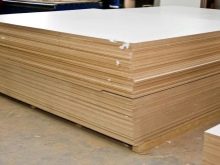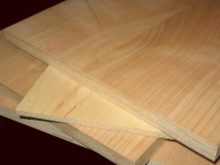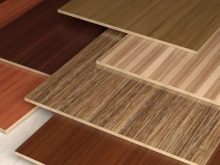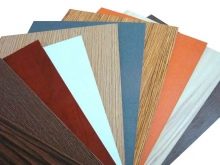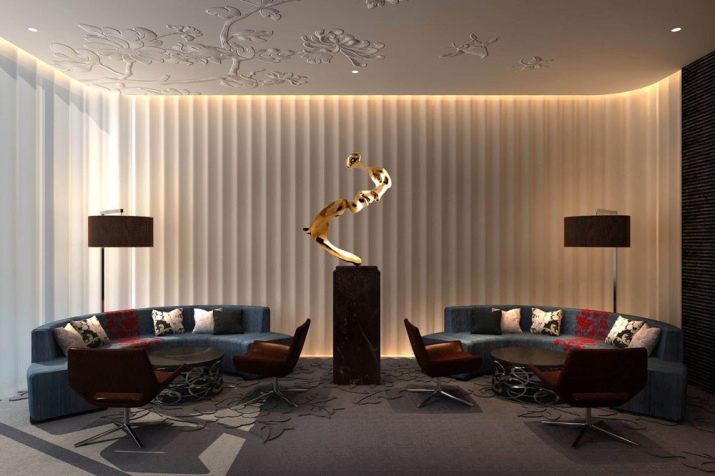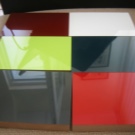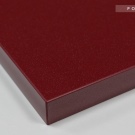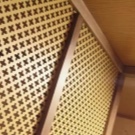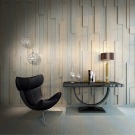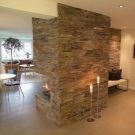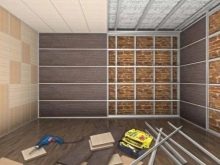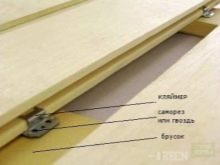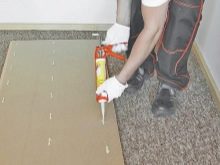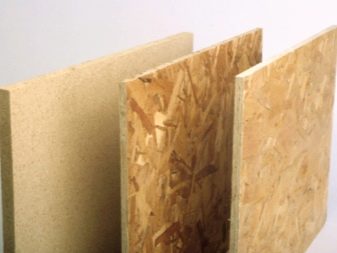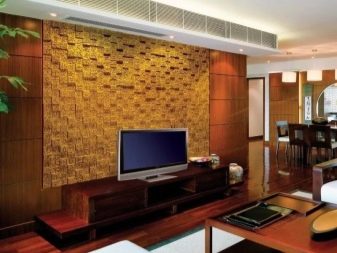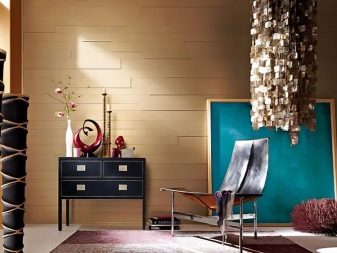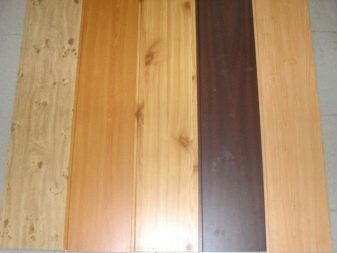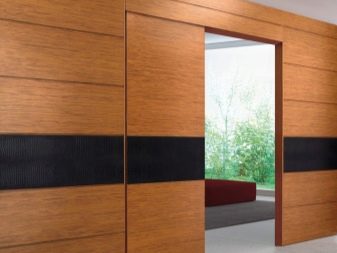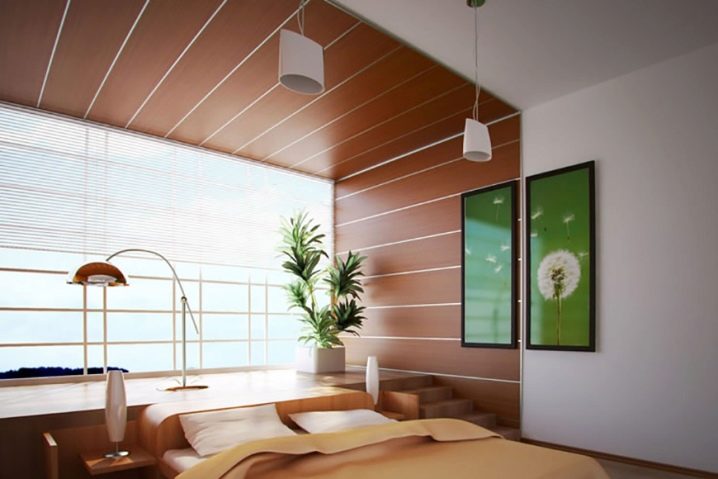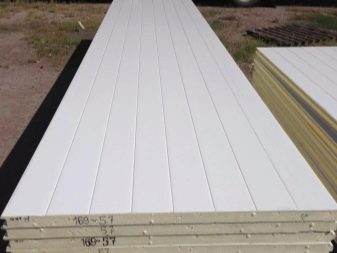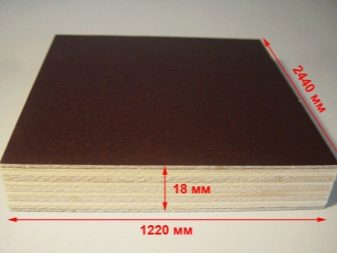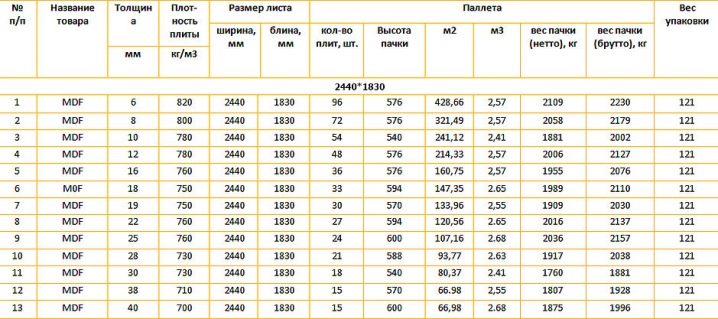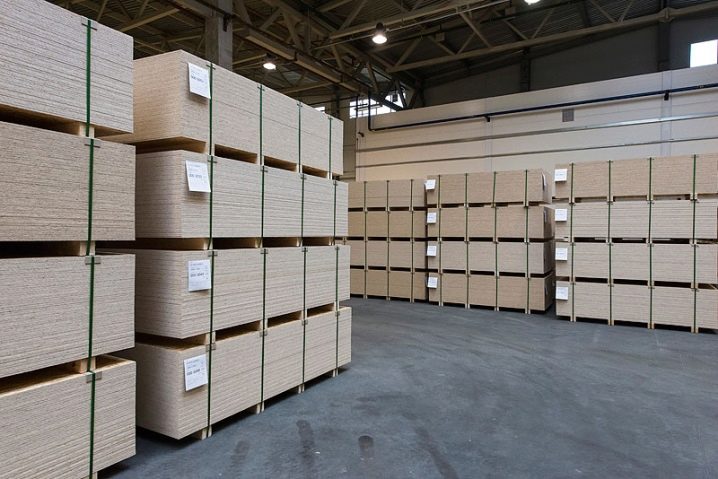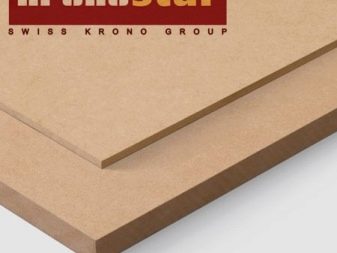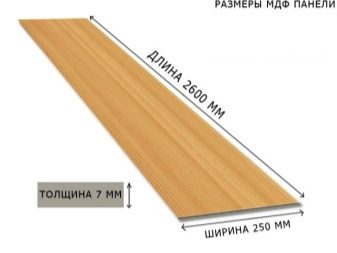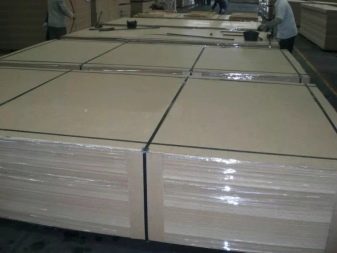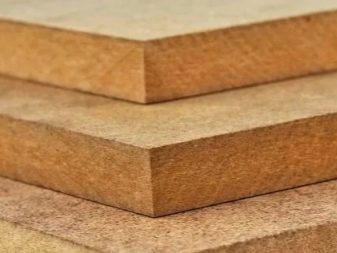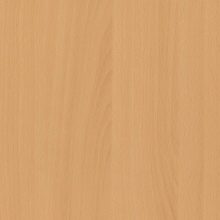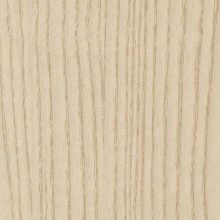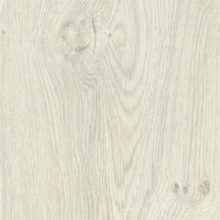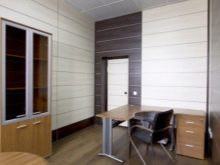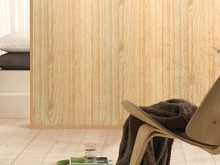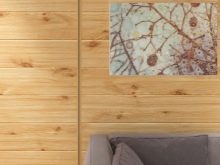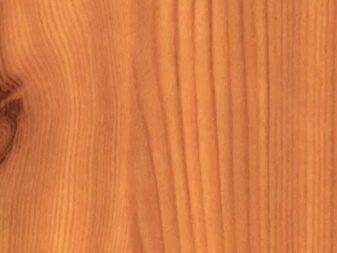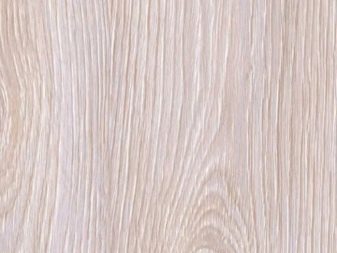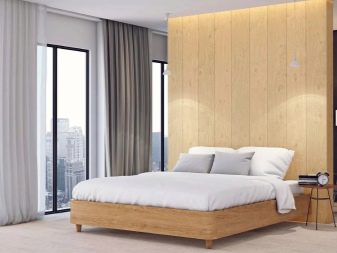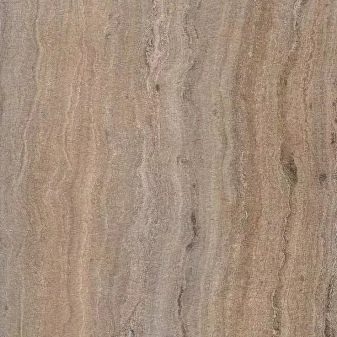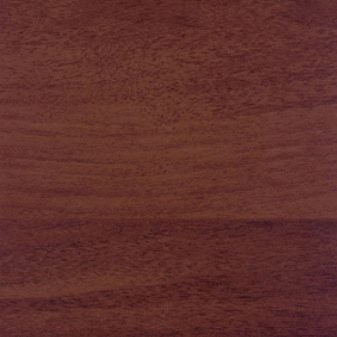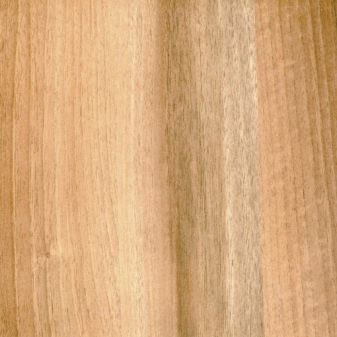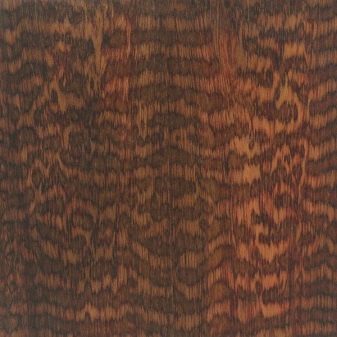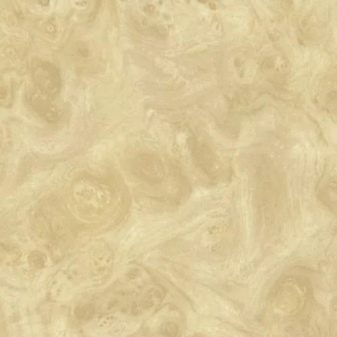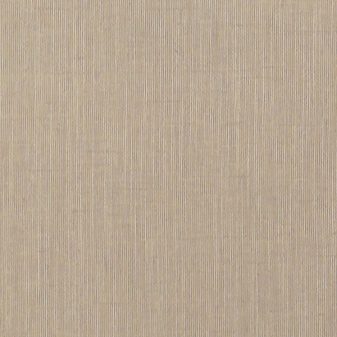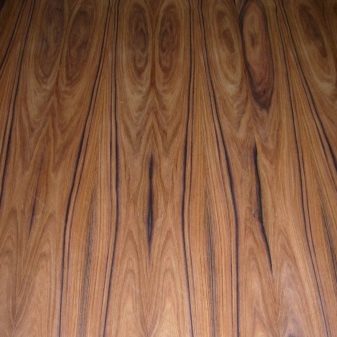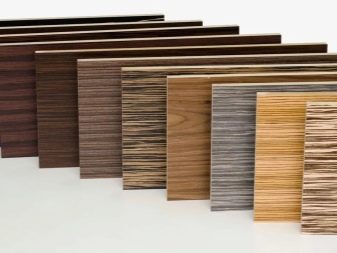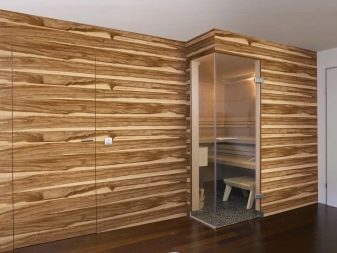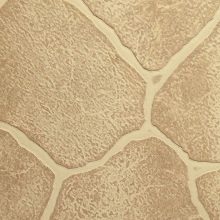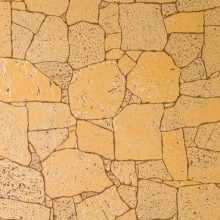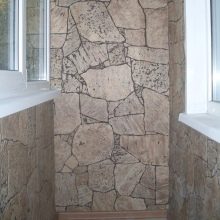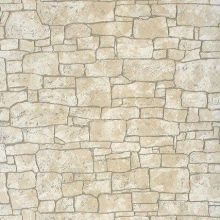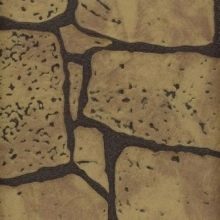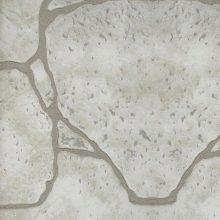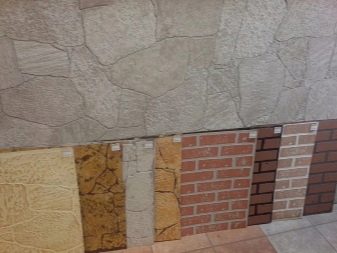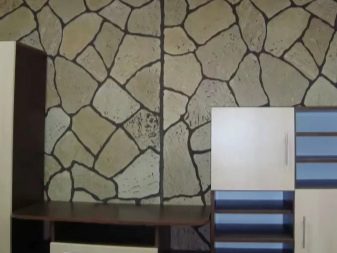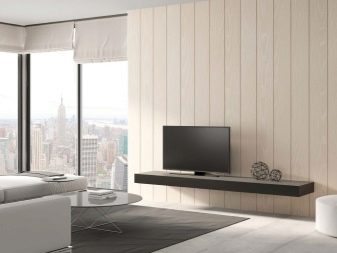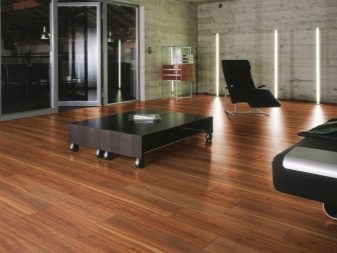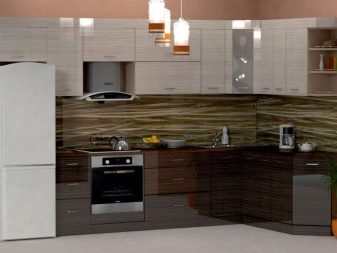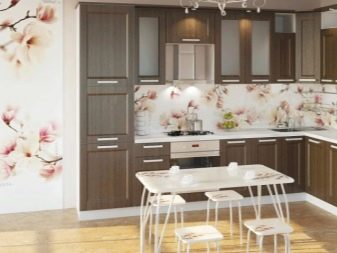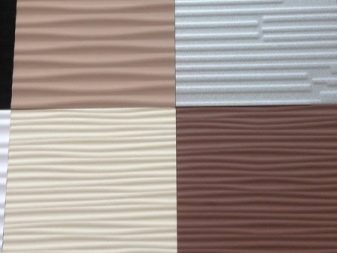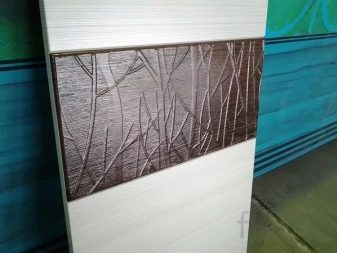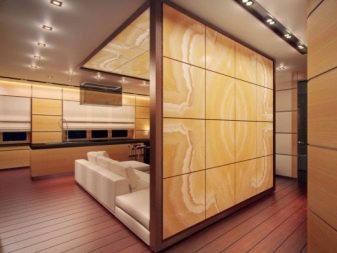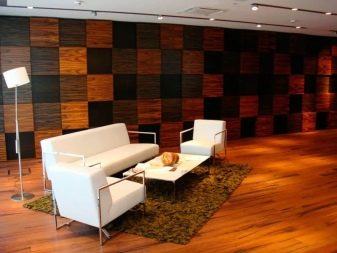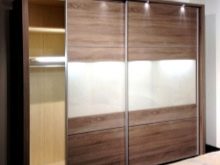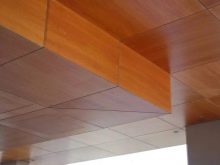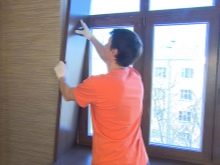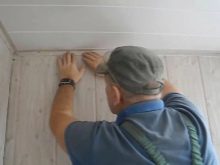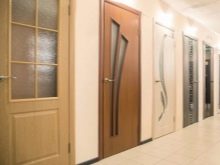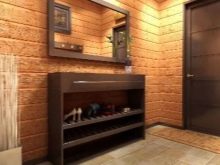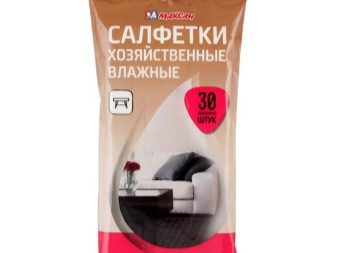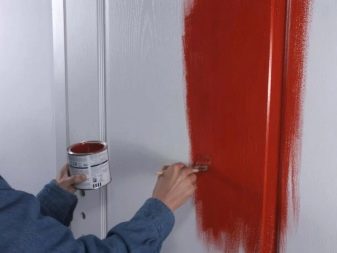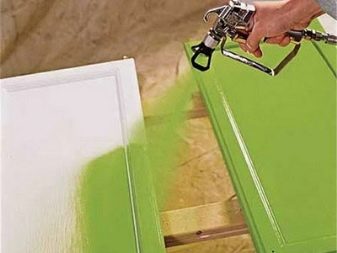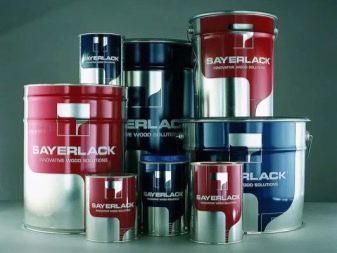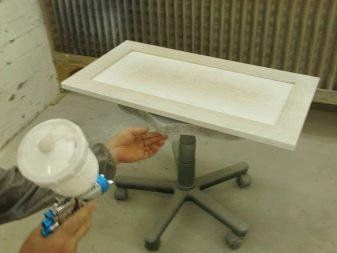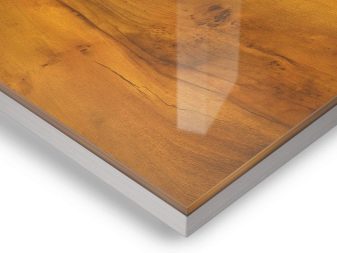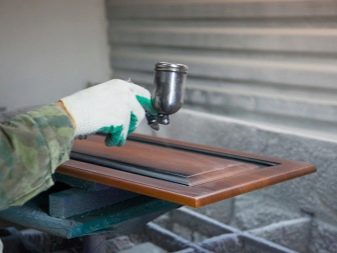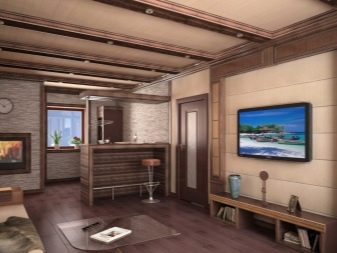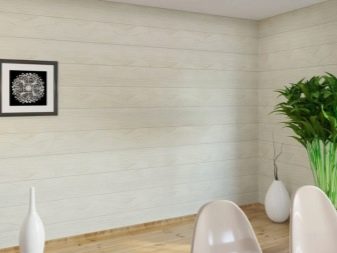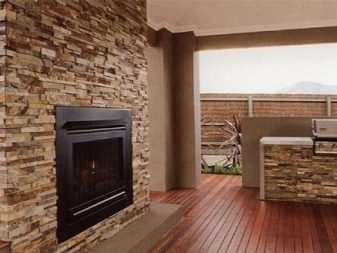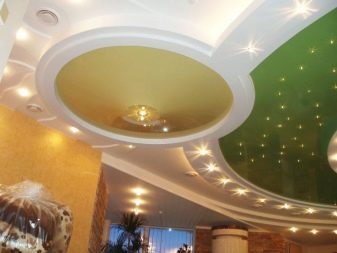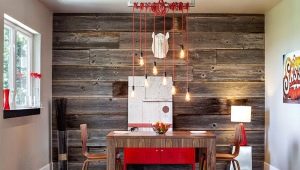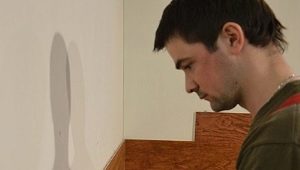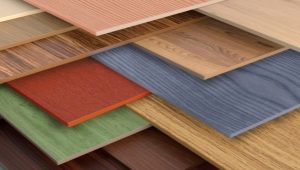MDF panels: varieties, sizes and colors
The history of the production of MDF boards is rooted in the distant past of the Mayan and Aztec times. After millennia, the old technology was restored in the UK. And in the XIX century in America was launched the first line for the production of fiber boards. Since then, the production of various types of plywood has not stopped until today.
What it is?
MDF is a material that began to be produced in the 60s of the last century in America. In fact, it is an abbreviation of Medium Density Fiberboard, which means medium density fiberboard. The abbreviation also fully complies with the German name Mittel Dichte Faserplatte, which means medium density fiberboard based on fibers, and simple decryption is the fine dispersion fraction. In Russia, this material began to produce since 1997. MDF is a plate made of material produced from wood chips,based on the principle of pressing in high temperature conditions.
There are several stages of the production technology of this type of product. First, the raw material is prepared. This happens as follows: the logs are cleared of bark and grind into chips. Then the chips are washed and steamed. In the next step, fibers are formed, which are then crushed into crumb. The finished mass is heated, there is a release of wood resins, due to which the composition is bound. Gluing of sawdust is carried out automatically due to the presence of lignin contained in the cells of woody plants. Therefore, this material is considered to be environmentally friendly and safe.
The technical conditions allow the use of certain chemicals in the production of MDF sheets. But their content is so small and insignificant that in the total share of ingredients these indicators are not even taken into account. Accordingly, they do not pose any threat to human life and health. Further, the material is dried, after which air is removed from the pores using vacuum cyclones.The next step is to form on a special molding machine, where the composition is leveled with rollers.
Next, the formed carpet is pre-pressed before the final pressing step. When the tape from MDF is ready, it is cut and cooled. These plates are not yet finished product in the form that is familiar to us. They still have to go through grinding, with which their surface is perfectly ground. Modern methods of production of MDF made it possible to obtain high-quality material for decoration.
Advantages and disadvantages
Material from MDF meets all safety requirements, has a water and bioresistance. The production of fibreboard wood panels has become widespread due to its universal properties and ability to maintain shape. Nowadays, this material is widespread. It is used in many industries and agriculture, in machine building and aircraft industry. It is indispensable in the manufacture of furniture, musical instruments, and children's toys.
The material is easy to install, does not require expensive fixtures, unpretentious in the care. Under the conditions of operation, it does not crack, does not crack and does not warp. Structural elements created with it can be easily replaced or dismantled. The high density of the material - up to 1200 kilograms per cubic meter - allows you to create the necessary constructions of various kinds with the help of milling machines. Manufacturing technology of fibreboard provides for their use in enclosed spaces with people, so all the elements of the composite as neutralized. Previously, phenol was used in production, the compounds of which were harmful to human health. The resin of the group of aminoplasts was replaced by the resin of carbide groups to replace the toxic substance; as a result, the material acquired environmentally friendly properties.
When choosing MDF boards, one should proceed from the peculiarities of the environment where they will be applied. And when using - to observe some rules that are common to all types of modern products of this type. So, it is not recommended to use and install MDF boards near water heating elements, since this material does not tolerate exposure to high temperatures and high humidity.It is better to avoid direct sunlight and to prevent the occurrence of condensate on time. After installation, the panel should be closed from the end to prevent moisture from seeping in, and later the panels would not be distorted. To do this, you can paint them with paint or varnish.
There is information about the full identity of MDF and MDF panels. But it is not. When familiarizing with the technical conditions and characteristics, it turns out that wood-fiber sheet plates (DVP) are made of wood chips by pressing using high temperatures, fixed with special binding components that are harmful to humans in high concentrations. To bind elements, composite materials are added to them, which in the MDF and DVP boards have some differences. It all depends on the production technology.
The production of MDF boards has been established since the 19th century. The technology of their production has changed significantly during this time. Today it provides two ways: “dry” and “wet”, which determines the types of plates - hard and soft. In the “wet” method, the microparticles are glued by their own wood resins in hot water at +230 degrees. Then the sheets are rolled on presses and dried in a special chamber.
In the "dry" method, the material is first dried, and only then it is cut and pressed into layers. As a rule, phenol resin and paraffin are added to the plates made by the dry method. This is how high-strength materials are obtained with the marking “T” - solid (or hardboard). The letter "T" means that the plate is presented on both sides without finishing; the label “TV” reports that the hardboard has waterproof properties. There are about nine such markings, and all of them characterize grades of hardness of hardboard. Solid slabs are more common in use due to their “stone” strength. Soft are used as a material for roughing the ceilings and walls, semi-solid - for the production of furniture.
To find out all the pros and cons of each type of product, you should compare the fiberboard panels with MDF panels.
- MDF - medium density fiberboard - much higher than its elasticity counterparts. They are quite soft, therefore, better amenable to design processing. MDF panels in comparison with MDF are more amenable to milling, they are more plastic, they bend easily, telling surfaces the necessary forms and structures.This is its difference with fiberboard, which is quite monumental and specializes in the construction and furniture industries.
- Panels made of MDF and MDF, produced by the “hard” method, are covered with a special protective layer, undergo so-called veneering, which, in addition to mechanical effects, also protects them from water ingress. But protective coatings lose these properties over time, after which the material swells and deforms. Therefore it is necessary to cover it again. This is especially true of the upper and lower joints, which must be covered additionally with a special compound in order to avoid wetting during wet cleaning.
- Hardboard or hardboard, unlike MDF, is completely waterproof, which gives this material additional qualities of strength.
- The difference between MDF and MDF is also in the fact that MDF plates do not fade in the sun, while it is desirable to protect the first from direct sunlight.
- Among the features of MDF boards are their inability to withstand high temperatures. Although temperature indices of +700 degrees Celsius are difficult to achieve in living conditions, it is still better to avoid prolonged heat exposure to this material. It can swell, warp and lose its appearance and shape.
- At the same time, MDF and MDF panels are equally good for painting, as they are produced with a perfectly smooth and even surface. Wet-based fiberboard panels have a characteristic uneven lattice structure, which facilitates its attachment to the surface.
- The main advantage of using MDF and MDF panels is the lack of so-called wet works, which are inevitable when finishing the walls with plaster. This eliminates the need for daily cleaning. MDF panels also do not need finishing.
- The dimensions of MDF sheet are much larger than MDF. Since their production is very expensive, manufacturers, in order to simplify it, produce sheets of large sizes, some of which reach 5 meters.
Types and forms
The profile of fiber plates of porous content is of three types: finishing, frame and trimming. Due to its universal qualities, it is able to take on different types and forms. This multifunctional quality is widely used in the manufacture of furniture, finishing profiles, as well as decorative panels.
Leaf surfaces of the profile are formed into a special coating.This allows it to be used in rooms of various types and purposes.
By application, MDF profile is classified into wall, floor and ceiling panels, as well as unilateral and bilateral. According to the method of surface coating, the profile is subdivided into plain and seamless. When installing seamless panels, each subsequent element is fixed on the previous one: the groove closes the protrusion. Due to this, the effect of the integrity of the coating. According to the method of production, the MDF profile can be sheet and wall. MDF sheets differ from wall panels in size and method of attachment. The plates are produced both as raw material for finishing the inner surface of the walls in the rooms, as well as finishing: painted, laminated, veneered or lacquered. Furniture and other fittings, worktops, cabinets, doors, as well as wall decorative panels are made from the plates.
Depending on the technological features of production, MDF panels are divided into several types.
- Solid-molded panels are a material with a perfectly smooth surface on all sides. This effect is achieved due to the features in the production technology using certaintemperature and pressure indicators.
- Moisture resistant panels are made of MDF boards from a highly durable material. In the production of wood chips used from the best wood, which takes a long hardening when exposed to high temperatures. Such panels are used in rooms with high humidity, for example, for finishing bathrooms, balconies, in saunas.
- In the initial stage of production, laminated MDF panels are manufactured as all-pressed, and then their surface is treated with a polymer film. The profile, covered with PVC on both sides, is widely used for the manufacture of furniture, countertops. Such panels imitate wood, stone and other textured surfaces well, at the same time repel dust and moisture.
MDF panels are divided according to the method of surface finishing on lacquered, painted, veneered, glossy, perforated, 3D-panels, as well as "under the stone." Types of these surfaces can be embossed, openwork or carved, with milling. The painted and varnished panels are made as follows: a raw slab is taken, which after special treatment and sanding is painted with paint or acrylic varnish, a matte surface is obtained.Wall interior panels of veneered or veneered plates, lined with precious wood, not only imitate a wooden surface, but are such. Wall panels with a film are issued two types: glossy and high-gloss. The pearlescent surface is created using PVC lamination with a film of varying degrees of shine. Such panels are also made in silver and gold colors, imitating mirror surfaces.
Perforated panels have a surface with a varied openwork structure in the form of an ornament or pattern. Due to this property, the effect of lightness and weightlessness of structures made of this type of material is ensured, which is favorably played up in the interior. They are used as decorative elements, for example, as ceiling "breathing" floors. Panels with 3D effect have a relief milled coating created by a special tool using computer technology. As a result, any image can be transferred to the basis of panels from MDF. Among the latest developments in this area is the production of MDF panels with imitation of a stone surface.Such panels are one-on-one similar to natural stone, and in everyday life such materials are called “stone panels”; they are produced in the form of plates or sheets.
Any types of MDF panels are fastened in several ways: using a plastic guide with special clips, on wooden rack structures using metal fasteners, as well as by planting on liquid nails. Plastic equipment is suitable in rooms with high humidity, and the metal is suitable for dry rooms.
In the Russian market, you can choose the appropriate version of this type of product at the price and quality: from economy, standard - to the elite expensive materials.
Specifications
Fiberboard panels are manufactured taking into account such technical characteristics as:
- dimensions;
- moisture resistance;
- composition density;
- aspects of flexural and fracture strengths;
- the presence of water, toxic substances and minerals;
- mechanical resistivity;
- tearing along the plane;
- certificates of conformity, guaranteeing fire safety and environmental friendliness;
- material flammability and flame retardant performance;
- the smell emanating from the panels treated with special non-flammable compounds.
These or other characteristics are strictly individual and depend on the manufacturer.
In the most common panels, the indicators are as follows:
- the average density should be at least 780 kilograms per cubic meter, deviations in thickness of no more than 0.3 millimeters are allowed;
- in length and width - up to 5 millimeters per meter;
- swelling per day - up to 17 percent;
- flexural strength - 2.1 kilonewton per square millimeter (at break not less than 0.55 newton per millimeter squared);
- departure from the direction of the faces should not exceed 2 millimeters per meter;
- minerals should not exceed 0.05 percent;
- formaldehyde - 8 milligrams per 0.1 kilogram;
- the moisture content of the material in the residue is not higher than 4–9 percent.
The weight of the material depends on the thickness and density of each panel or sheet and is made up of their total number.
And also the weight is influenced by the surface finish of the panel and its composition. For example, with the same thickness and density indicators, the veneered panel will weigh more than the laminated panel.Bilateral panels, respectively, are higher in weight than one-sided ones.
MDF sheet in sizes 2.8x2.07 meters will weigh differently, depending on its thickness:
- 3 millimeters - 16 kilograms;
- 8 millimeters - 41 kilograms;
- 18 millimeters - 88 kilograms;
- 28 millimeters - 142 kilograms.
Weight is calculated by the formula, which is based on indicators of height, thickness and width. For example, a sheet with a size of 1 meter per 1 meter thickness of 5 millimeters will weigh 4 kilograms, a thickness of 10 millimeters - 8 kilograms. Every millimeter is plus 0.8 kilograms by weight. Calculating the weight of 1m² plate, you need to use the testimony of its size - 2.8x2.07 meters, weight - 50.62 kilograms and density - 740-760 kilograms per cubic meter. It turns out that the weight of one square meter will be 7.5 kilograms.
Weight per package depends on the number of individual panels. For example, the packaging of wall panels measuring 2.6 meters by 25 centimeters with a thickness of 7 millimeters in the amount of 6 pieces according to GOST will weigh 19.2 kilograms. If one panel has an area of 0.65 square meters, then the area of the whole package will be 3.9 square meters. Detailed specifications are available from sales consultants.
Dimensions
Dimensions of MDF panels are made up of length, width and height. Sheet thickness is also taken into account. There are thin and thick panels. The dimensions of MDF panels often do not exceed the standards. But at each enterprise, specific dimensions are always in preference, which ensures the specialization and competition of manufacturers.
MDF panels of leading manufacturers, such as Kronostar, have the following dimensions with a total thickness of 7 millimeters:
- 2.6 meters / 20 centimeters;
- 2.6 meters / 32.5 centimeters;
- 2.6 meters / 15.3 centimeters.
- 2.6 meters / 23.8 centimeters.
The MDF sheet profile is characterized by such standard sizes with a total thickness of 5–8 millimeters, as:
- 2.44 x2.05 meters;
- 2.75x1.83 meters;
- 2.62 x1.22 meters;
- 2.8x2.07 meters;
- 2.44 x1.83 meters.
On average, the size of wall panels is reduced to general indicators: length - 2.6 meters, width - 25 centimeters. The required sheet thickness is selected based on the purpose, method of operation and features of the room where the panels will be installed. The difference exists only in terms of the width of the panel, otherwise they are all standard in size, but differ significantly in colors and features of the surface coating.
Colors
Colored MDF panels are made by applying to the sheets of the profile with glue - the lining base of a special composition. These compositions create various decorative surfaces, and when using paint or film of different colors, they use colored surfaces with or without drawings. With all their diversity, there are some so-called running panels - these are wenge panels, mahogany, mocha, as well as the usual solutions: black, brown and white panels.
MDF panels with imitation under wood are in great demand, namely:
- "Oak Canyon Wild";
- "Eastern beech";
- "Silver Ash";
- "White Ash";
- "Pine light";
- "Pine natural";
- "Pine Golden";
- "Alpine Oak";
- "Knotted oak";
- "Light Oak";
- "Cedar";
- "Taiga cedar";
- Italian Walnut;
- "Milan nut";
- "Karelian birch light";
- "Dark Karelian birch";
- "Snake Tree";
- Makara;
- "Multichpon" and others.
All of the above panels are veneered. Such surfaces consist of a cut of a tree of valuable breeds, painted and processed with preservation of the structure. They may also consist of softer, inexpensive wood that imitates the texture and color of the noble wood surface (fine-line).All versions of these panels are created using innovative methods for the production of wood-fiber products. Many manufacturers are engaged in the manufacture of custom designer panels to order.
The most popular are the following panels with imitation of stone:
- "Capri Stone";
- "Deserted";
- "Stone Alatau" with embossed;
- "Beige Canyon" embossed;
- "Stone amber" embossed;
- "White stone" with embossed.
The Dakota panels imitate a stone uneven surface with small tiles, they are presented in white, beige and violet versions. For fireplace or arched decoration, it is advisable to use plates with imitation of wild stone, as well as moldings of the corresponding colors, textures and solutions. These samples look good on the wall, decorated under the arch of the cave. In addition to these, you can add panels with photo printing for maximum visual effect, such as a sunny flowering valley with a shadow of green cedar.
The use of panels simultaneously with imitations of wood and stone is the perfect solution for a country interior. Colored MDF panels in muted pastel colors look good in the bedroom or nursery. And their types for tile or marble are characteristic of bathroom designs.With all the variety of colors and types, you can get confused and face a difficult choice. To solve this problem, there are specialists who are familiar with the quality of this type of product. Many of them work directly with manufacturers of popular brands and can provide product catalogs.
Brands
The most famous manufacturers of wood-fiber boards are traditionally represented by domestic brands.
Kronostar
Kronostar is a popular domestic enterprise specializing in the manufacture of veneered panels. In 2004, Kronostar launched a line of production of MDF sheets and panels using its own technology. The company's products are represented by slabs, wall panels and laminated floors. Furniture plates and wall panels are made of MDF. HDF is used for flooring - it is a high-density fiberboard with varying degrees of wear resistance. Materials are made on the latest modern equipment using high-tech production. The company enjoys a well-deserved authority in the woodworking industry, has certificates in accordance with European quality standards.
In 2017, after 15 years of successful work, the company was renamed to Swiss Krono. The Swiss Krono plant is the brainchild of the Swiss Krono Group. The concern consists of a dozen subsidiaries that are located in many countries around the world. Swiss Krono has won awards at the most prestigious Russian environmental contests by the criteria of the state ecological program for the conservation of energy resources. One of the types of investments of the plant is the manufacture of high quality furniture fittings. The production of the plant in this area is represented by furniture panels for the manufacture of sliding wardrobes, countertops, built-in furniture, doors and other elements of furniture. The panels are traditionally presented in the form of several collections with a large selection of color and texture solutions, which makes it possible to use them in various interiors.
Albico
Trading company Albico, working since 2008 in the woodworking industry, represents a choice of quality products of its production: MDF panels and slabs. Product quality is ensured by the multi-layer structure of the material: first, the surface of the panels is primed with several layers, then a primer is applied, and then digital printing.The finished surface is laminated again. But the process does not end there. Then it all becomes covered with colorless putty, which fills the porous surface. Then the panel is polished, and then acrylic lacquer is applied. In fact, the surface of the panels becomes almost glass.
At first, the company specialized only in the production of door structures. In 2013, she launched the first batch of high-gloss furniture panels. Since 2014, Albico has been manufacturing 3D panels. Products of this Russian brand are in great demand. The company manufactures MDF sheet panels for cabinets, doors, as well as wall panels with various types of surfaces.
Airon
Particularly popular are Astrial Astrial glossy furniture panels from Airon. In their production, MDF plates are first pressed on a special machine, then, using special technologies, relief forms of vapor and glossy surfaces are applied to them. Such panels are successfully used for the manufacture of doors or as a decorative material for interior decoration.
Application
The scope of application of sheets and panels of MDF is much larger than it might seem. This material has proven itself in the furniture industry. It is widely used for finishing various surfaces in the form of decor. Traditionally, MDF sheets are used before applying various types of flooring as a framework for laminate. In the wall version can be used for finishing the walls under the finish coat. MDF profile is used as a batten when installing roofs, packaging material.
With all its diversity, MDF wall panels make it possible to carry out any approach for designing an aesthetically literate space. They are not limited to reconciliation alone. Features of the panels allow them to be used at different angles, horizontally, vertically, or herringbone.
The main applications of MDF panels include the following:
- MDF panels are ideal for suspended ceilings, they are placed on the ceilings as a solid ceiling covering;
- they are the basic material for the manufacture of furniture and joinery, for example, table tops and decorative kitchen apron, as well as cabinets and shelves;
- from MDF panels do window frames; they are used for the restoration and decoration of the window;
- the panels additionally provide good sound absorption, which makes them indispensable in commercial premises; they are easily mounted with special “thorn-groove” connecting structures using the same tools as when working with wood;
- MDF panels are used for the production of entrance metal and interior doors, as well as for the design of ready-made door structures and slopes;
- in unheated premises for warming attic, loggias and balconies, as well as for warming cottages;
- decorative panels can be used in any apartment dimensions: in the kitchen, in the corridor, bedroom, in the hallway, in the hall, in the living room and even in the toilet.
Care
Caring for the panels is not difficult. There are neither many hours of tedious wiping of surfaces, nor the cleansing of layers of dust and dirt. The surfaces of MDF panels are already equipped with dust- and moisture-proof properties, which makes cleaning as comfortable as possible.
When cleaning it is enough to follow such simple rules as:
- no need to wipe walls and other surfaces with detergents and various powders, because the material did not like the effects of aggressive and abrasive substances;
- just wipe the surface slightly with a damp cloth;
- in the case of severe pollution, for example, when paint gets in, it is not worth scrubbing the panels with gasoline, thinner and other chemicals; You can always replace damaged items with new ones.
How to paint?
If necessary, MDF panels can be painted at home with their own hands. This is done in order to provide them with additional properties of resistance to temperature extremes and moisture. It is possible to paint the panels before and after installation. But it is preferable to use the second option, as it is much simpler and easier. It is advisable to paint the panels in the bathroom and in the kitchen, as they can then often wash and wipe. Such surfaces do not warp and do not swell from moisture and other substances. In addition, the color panels look brighter and juicier, illuminating the interior, as well as an additional advantage is the increase in service life.
It is possible to paint the surfaces of MDF panels with a brush or using a colorful car, which is much more convenient. In this case, the result will be much better. The disadvantages of painting the panels include their tendency to fading. If you have already begun to paint - then you have to tint all the time. And it is much more expensive than using decorative film.
Paints should be selected based on the characteristics of the structure of the surface material. Often it imitates wood, therefore its structure is rough. So, we need paint on wood. In general, for the ideal option, you need to use special formulations for this type of wood fiber surfaces. But it does not matter.
It is best to apply polyurethane enamels for dyeing. They are also called MDF enamels. The surfaces painted by them, as well as possible withstand the effects of destructive factors. The process itself does not require any special skills, it can be done independently with a brush, roller or paint sprinkler. Instead of polyurethane enamel, you can use ordinary alkyd enamel or oil paints.
For added protection, it is recommended to lacquer the painted surface. Some doubt, or you can varnish MDF. It is necessary to cover, as this will fix the protective property of the paint and preserve its color. After selecting a specific color solution and composition should be trained. The dyeing process is preceded by a number of preparatory aspects: grinding or leveling, puttying and priming. In the process of preparing the surface, the panels are rubbed off, chips and other defects are closed, then a layer of primer is applied for better adhesion to the coloring composition. The paint is applied in several layers in the direction from the periphery to the center, each of the layers of paint is dried.
It is best to use the spray gun, as this tool prevents the accumulation of smudges and streaks. The painted surface after full drying becomes varnished in several layers. To achieve the optimal variant, 2–3 layers are sufficient. Next, the surface is polished again with water. Now you need to wait a week to carry out the final stage - polishing with special tools.At observance of all rules and recommendations it is easy and simple to paint the MDF panels.
Options in the interior
MDF wall panels are designed to change the space inside the apartment. There are a lot of examples of their use. So, with the help of a simple individual design, you can update the interior of the whole house in a wooden style. It is worth starting with a room, for example, a living room. It often dictates the basic style of home space.
Scandinavian style is suitable for wooden house construction, which feature is the presence of natural materials and structures of wood and stone. On the walls fit white MDF “White Pine” panels with imitation of wood texture. Such a surface would be beneficial to shade light furniture made of plastic and metal. Brown printed textiles on windows with muslin tulle will create an atmosphere of peace and comfort.
If the room has a fireplace, then it can be successfully decorated with elements of panels under the stone. In this case, the “Wild Stone” panel in a dark version is suitable, which is preferable to imitation of stone or brickwork for a number of reasons - brick elements violate the originality of the space,and rustic style is undesirable in this case.
As a ceiling cover, you can use the classic stretch ceiling. This will avoid unnecessary structures in the interior, all kinds of ceiling baseboards and other elements that overload the space. It is worthwhile to dwell on the multi-level version of the stretch ceiling in soft green tones. For its installation will need special skills and ability, so this process is better to entrust professionals.
See how to mount veneered MDF panels on the wall in the video below.
